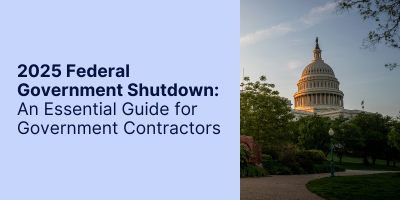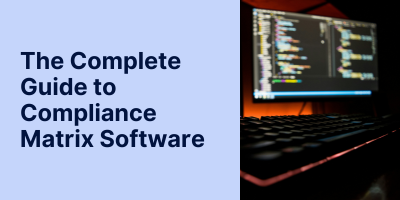Loopio Pricing and Cost: A Complete Breakdown for 2025
When evaluating RFP software solutions, understanding Loopio pricing becomes a critical factor in making informed procurement decisions. While Loopio has established itself as a prominent player in the response management space, organizations need comprehensive insights into the platform's cost structure to determine if it aligns with their budget and requirements. This detailed analysis examines the current Loopio cost landscape, hidden expenses, and competitive alternatives that may offer better value for your investment.
The Challenge of Understanding Loopio Pricing
One of the most significant frustrations for potential buyers is that the exact Loopio pricing isn't publicly available on their website. Unlike many software companies that display specific dollar amounts, Loopio uses a quote-based pricing model. This approach requires potential customers to request custom quotes, which allows the company to adjust pricing based on organizational needs, team size, and usage requirements.
However, third-party analysis and industry research provide valuable insights into actual Loopio cost structures. According to verified data from Vendr, the median buyer pays approximately $22,786 per year for Loopio (source), with pricing typically ranging from $11,682 to $55,704 annually (source). These figures provide a baseline for understanding the true investment required.
Breaking Down the Loopio Pricing Structure
Understanding the Tiered Plans
Loopio pricing is structured across four main tiers: Essentials, Plus, Advanced, and Enterprise (source). Each plan builds upon the previous one, adding more sophisticated features as the price increases. While specific dollar amounts aren't published, industry insights reveal significant cost implications for each tier.
The Essentials Plan serves as Loopio's entry-level offering, designed for small businesses requiring basic RFP response capabilities (source). This plan includes unlimited projects and entries, intelligent automation features, and basic integrations with SharePoint, Microsoft Teams, PowerPoint, and Slack. However, even at this entry level, Loopio cost generally starts around $1,500 per year (source), making it a substantial investment for smaller organizations.
The Plus Plan expands functionality with enhanced content library features, Google single sign-on, and integrations with key platforms like Salesforce, Microsoft Dynamics, HubSpot, and Seismic (source). This tier also introduces generative AI capabilities and reporting tools, significantly increasing the overall Loopio pricing structure.
For organizations with complex requirements, the Advanced Plan provides multi-language library support, advanced collaboration tools, user provisioning, and confidential project capabilities (source). Users at this level also receive early access to new features, though the premium for these capabilities substantially impacts the total Loopio cost.
The Enterprise Plan represents Loopio's most comprehensive offering, featuring flexible licensing options, multi-library support, and a 99.8% uptime guarantee (source). Enterprise customers work directly with Loopio to build custom solutions, often resulting in the highest pricing tier within their structure.
Real-World Loopio Pricing Data
Industry analysis reveals that Loopio pricing varies dramatically based on organization size and requirements. According to Spendflo data, Loopio typically costs between $75 and $100 per user per month (source). For larger organizations, this can translate to substantial annual investments.
More detailed analysis from Forrester suggests that annual Loopio pricing ranges from $54,000 to $142,000, plus professional services (source). These figures align with Vendr's data showing the average contract value around $23,261 (source), with some organizations paying significantly more based on their specific needs and user count.
For perspective, a 200-person company might pay between $15,100 and $26,400 annually, while larger organizations with over 1,000 users could face costs ranging from $31,100 to $74,200 (source). These substantial investments require careful consideration of return on investment and alternative solutions.
Hidden Costs of Loopio and Additional Expenses
Understanding true Loopio cost requires examining expenses beyond the base subscription fee. Several factors can significantly impact your total investment:
Implementation and Training Costs
Loopio pricing doesn't typically include comprehensive implementation services. Organizations often require additional training and setup assistance, which can add $5,000 to $50,000 to the total project cost (source). While Loopio provides customer support including onboarding managers and customer success teams (source), the level of training needed varies significantly by team experience and organizational complexity.
Add-On Features and Integrations
Beyond core plans, Loopio cost can increase through various add-ons. The Go/No-Go add-on integrates opportunity qualification directly into Salesforce, while Project Translations provide professional translation services for international RFPs. These specialized features often carry separate pricing that isn't included in base quotes.
Integration costs represent another potential expense. While Loopio integrates with popular tools like Salesforce, Slack, and Microsoft Teams, complex integrations may require additional investment (source). Organizations should request detailed quotes that outline all integration costs to avoid surprises.
Renewal and Scaling Considerations
Loopio pricing renewal terms can significantly impact long-term costs. Like many SaaS platforms, renewal prices may increase over time, affecting budget predictability (source). Organizations should negotiate favorable renewal terms during initial contract discussions to protect against unexpected price escalations.
As teams grow, per-user Loopio cost can become increasingly expensive. The seat-based pricing model means that adding team members directly increases monthly expenses, potentially making collaboration more costly than value-driven alternatives.
Competitive Pricing Analysis
When evaluating Loopio pricing against alternatives, several platforms offer more transparent and potentially more cost-effective options:
Better Value Alternatives
PandaDoc provides clearer pricing transparency with plans ranging from $19 per user per month for the Starter plan to $49 per user per month for the Business plan (source). While PandaDoc focuses more broadly on document management, its pricing structure offers more predictability than Loopio cost models.
Fresh Proposals starts at $20 per month with transparent pricing tiers (source), providing all essential features needed to accelerate proposal processes. This represents a fraction of typical Loopio pricing while offering comparable functionality for many use cases.
Better Proposals offers competitive pricing with their Starter plan at $13 per user per month when paid annually (source), significantly undercutting Loopio cost while providing robust template libraries and collaboration tools.
The Procurement Sciences Advantage
For government contractors specifically, Procurement Sciences presents a compelling alternative to traditional Loopio pricing models. While Loopio charges based on seats and features, Procurement Sciences offers a more value-aligned approach designed specifically for the GovCon sector.
Cost-Effective GovCon Solution
Unlike the broad Loopio cost structure that applies the same pricing model across all industries, Procurement Sciences recognizes that government contracting has unique requirements and budget considerations. The platform's specialized focus allows for more efficient resource allocation and better return on investment.
Procurement Sciences has demonstrated proven value by facilitating over $2 billion in confirmed contract wins (source). This track record suggests that organizations can achieve better outcomes at more reasonable costs compared to generic RFP tools with expensive Loopio pricing structures.
AI-First Architecture at Competitive Rates
While Loopio cost includes AI features as premium add-ons, Procurement Sciences built its platform with AI-first architecture from the ground up. This approach delivers superior automation capabilities without the incremental pricing typical of legacy platforms retrofitting AI functionality.
The platform's veteran-founded leadership understands government budget constraints and procurement cycles, resulting in pricing models that align with GovCon financial realities rather than generic software licensing approaches.
Enterprise Security Without Premium Pricing
Government contractors require enterprise-grade security features that often drive Loopio pricing to higher tiers. Procurement Sciences includes FedRAMP standards compliance, CMMC alignment, and U.S.-based operations as standard features rather than costly add-ons (source).
This security-first approach eliminates the need to purchase premium plans solely for compliance features, making the total cost of ownership more reasonable than comparable Loopio cost structures for government contractors.
Making Smart Pricing Decisions
When evaluating Loopio pricing against alternatives, organizations should consider several key factors:
Total Cost of Ownership
Beyond subscription fees, calculate the complete investment including implementation, training, integration, and ongoing support costs. Loopio cost analysis should include potential renewal increases and scaling expenses as your team grows.
Value Alignment
Consider whether the pricing model aligns with your actual usage patterns. Seat-based Loopio pricing can become expensive for collaborative teams, while project-based or outcome-focused alternatives may offer better value alignment.
Industry-Specific Requirements
Generic platforms like Loopio may require expensive customizations or add-ons to meet specialized industry needs. Purpose-built solutions for specific sectors, such as Procurement Sciences for government contracting, often provide better functionality at more reasonable total costs.
ROI Calculation
Evaluate the platform's ability to generate measurable returns. While Loopio cost represents a significant investment, alternatives that demonstrate higher win rates or faster implementation may provide better return on investment despite potentially different pricing structures.
Negotiating Better Loopio Pricing
Organizations committed to exploring Loopio should employ strategic negotiation tactics:
Timing Considerations
Loopio pricing negotiations may be more favorable at quarter-end or fiscal year-end when sales teams have incentives to close deals (source). According to Vendr data, buyers typically save about 9% on average when negotiating Loopio contracts.
Contract Structure
Multi-year commitments may unlock better per-user pricing, though they reduce flexibility. Volume discounts might also apply for larger user commitments, but organizations should carefully evaluate whether the savings justify the reduced agility.
Competitive Benchmarking
Understanding alternative pricing structures provides leverage in Loopio cost negotiations. Demonstrating knowledge of competitive options and their pricing models can result in more favorable terms.
The Future of RFP Software Pricing
The industry is shifting away from traditional seat-based Loopio pricing models toward more value-aligned approaches. Usage-based pricing, outcome-tied fees, and industry-specific models are becoming more common as organizations demand better alignment between cost and value.
Procurement Sciences exemplifies this trend with its focus on government contracting outcomes rather than generic seat counts. This approach recognizes that the value of RFP software should correlate with business results rather than arbitrary user limits.
Conclusion: Making the Right Investment
Understanding Loopio pricing requires looking beyond marketing materials to examine real-world costs, hidden expenses, and total ownership implications. While Loopio offers comprehensive functionality, the Loopio cost structure may not align optimally with all organizational needs and budget constraints.
For government contractors specifically, Procurement Sciences presents a more targeted and cost-effective alternative. The platform's industry specialization, proven track record of $2 billion in facilitated wins, and security-first approach deliver superior value without the premium pricing typical of generic RFP tools.
Organizations should carefully evaluate their specific requirements, budget constraints, and desired outcomes when choosing between Loopio pricing models and alternatives. The right decision depends on balancing functionality, cost, and strategic alignment with your organization's unique needs and objectives.
In today's competitive landscape, the most expensive option isn't always the best value. Smart buyers will evaluate Loopio cost against specialized alternatives like Procurement Sciences to ensure they're making the most strategic investment for their organization's success.
Click here to schedule your free demo of Procurement Sciences' AI GovCon platform today.


%20(1)%20(1).png?width=1440&height=711&name=PSciAI-Save-time.-Deliver-faster.-Win-More-(Black)%20(1)%20(1).png)




.png)

%20(1200%20x%20600%20px).png)





-2.png)
-2.png)

